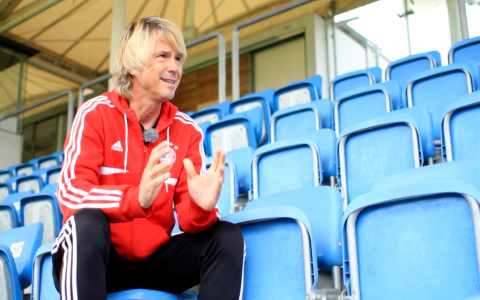# Understanding Motivation in Soccer: Why It Matters
Let’s face it, soccer is as much a mental battle as a physical one. Motivation in soccer separates winners from average players, turning potential into real results. Whether you are coaching a youth team or driving yourself to excel as a player, grasping motivation’s impact is your first step toward greatness.
Motivation in soccer isn’t just about scoring goals. It’s the driving force that gets players out of bed for early training, helps teams bounce back from losses, and keeps everyone striving for improvement throughout the season. Without motivation, even the most talented squads can underperform or struggle when adversity hits.
# The Science Behind Motivation in Soccer
To really get why motivation is so crucial in soccer, let’s dig into what research says. Sports psychology studies identify motivation as a key predictor of both performance and well-being. According to a study by the Journal of Sports Sciences, athletes with higher intrinsic motivation not only play better but also enjoy longer careers (来源: Journal of Sports Sciences, 2018).
There are two main types of motivation in soccer:
Intrinsic motivation – This comes from a genuine love of the game. Players feel joy and satisfaction in improving skills, teamwork, and pushing personal limits.
Extrinsic motivation – These are external rewards like trophies, praise, scholarships, or pro contracts.
Teams and coaches need to balance both to prevent burnout and keep players energized. However, intrinsic motivation tends to produce more sustainable, high-level performance. We can’t ignore the external rewards, but fueling a passion for the sport is the real game-changer.
# 5-Step Guide: How to Ignite Motivation in Soccer

Want to drive motivation in soccer, whether for yourself or your squad? Here’s a proven, step-by-step approach that delivers results:
Step 1: Set Purposeful Goals
Every player needs clear, specific objectives. Forget “just win the game”—instead, try “complete 90% of passes during the first half” or “make 10 defensive recoveries.” Realistic, measurable goals give a sense of progress.
Step 2: Foster Positive Team Culture
Motivation skyrockets in a supportive environment. Celebrate effort and improvement, not just victories. Encourage teamwork, positive feedback, and shared responsibilities.
Step 3: Promote Challenging Yet Achievable Tasks
Players stay engaged when pushed—but not overwhelmed. Gradually increase training intensity and match difficulty. This keeps boredom and complacency at bay.
Step 4: Recognize and Reward Progress
Acknowledge improvements, big or small. This could be a simple shout-out in front of the team, new captain’s armband, or tournament MVP trophy. Recognition fuels extrinsic motivation, especially for younger players.
Step 5: Provide Quality Feedback
Constructive, timely feedback can supercharge motivation in soccer. Focus on what’s working, then add one or two areas for growth. According to a FIFA technical report, teams with coaches who deliver regular, specific feedback show higher retention and better performance (来源: FIFA Technical Report, 2022).
# Real-Life Stories: How Motivation Turns Teams Around
Let’s make this personal. According to my experience coaching youth and elite teams, motivation can turn an underdog into a champion. A few seasons ago, our local club started at the bottom of the league. Motivation plummeted after a string of losses.
Instead of digging into tactics, we shifted focus: daily motivational talks, highlight reels of successful plays, and personal goal-setting sessions. By mid-season, players genuinely looked forward to showing up and giving their best. Not only did their game stats improve, but they also started winning—and ended up finishing second. Proof that inspired minds win games.
Another example? Look at Leicester City’s Premier League triumph in 2016. The squad lacked global stars, but strong intrinsic and collective motivation helped them beat all odds. The takeaway: motivation in soccer is the X-factor, even when skills and budgets don’t match the competition.
# Motivation in Soccer: Key Strategies Compared
Wondering which motivation strategy works best? Here’s a quick, side-by-side look:
| Strategy | Best For | Pros | Cons |
|---|---|---|---|
| Intrinsic Motivation | All ages, elite/pro players | – Sustainable performance – Increases enjoyment |
– Can be hard to spark in some personalities |
| Extrinsic Motivation | Youth, beginners, short-term goals | – Quick performance boost – Easy to implement |
– May lead to burnout if overused |
| Goal Setting | Teams, individuals | – Gives direction – Tracks progress |
– Goals must be realistic |
| Team Bonding Activities | Squads needing unity | – Builds trust – Boosts collective spirit |
– Takes time to organize |
# Common Pitfalls: Motivation Mistakes to Avoid
WARNING: Even with the best intentions, motivation in soccer can be stifled if you’re not careful. Here are the most frequent mistakes:
1. Overemphasizing Winning: Focusing only on trophies leads to anxiety and fear of failure.
2. Ignoring Individual Needs: Some players thrive on challenges, others need encouragement.
3. Lack of Role Clarity: Unclear expectations can cause frustration and low motivation.
4. Too Much Pressure: Constant push without breaks can kill enjoyment.
5. Neglecting Fun: When soccer feels like a chore, motivation drops fast.
Always check for these traps—and adjust your strategies as needed.
# Motivation Maintenance Checklist for Soccer Success
Want to keep motivation in soccer high all year? Use this expert-approved checklist:
– Define clear, achievable goals for every player and the team.
– Schedule regular team bonding activities outside of matches.
– Provide both intrinsic and extrinsic rewards for progress.
– Offer timely, specific, and positive feedback after every session.
– Monitor training load to avoid burnout.
– Adjust goals as skills and seasons progress.
– Keep open lines of communication between coaches, players, and parents.
– Include fun drills that mix things up and challenge players creatively.
– Celebrate all victories, including effort and sportsmanship.
– Review and refine motivation strategies after every tournament.
# Conclusion: Unleashing the Power of Motivation in Soccer
The benefits of focusing on motivation in soccer are clear. Teams with high motivation outperform the competition, recover from setbacks, and, most importantly, enjoy the game. Whether you’re a player aiming to reach the next level or a coach striving to get the best out of your squad, motivation isn’t optional—it’s essential.
Apply these strategies, stay alert for common errors, and make motivation your most reliable teammate on and off the pitch. Your journey to soccer excellence starts with the right mind-set—so why not get started today?


















